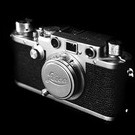THE ORIGINAL FAQ THREAD
-
Recently Browsing 0 members
- No registered users viewing this page.
-
Similar Content
-
- 3,168 replies
- 121,634 views
-
- 1,262 replies
- 89,854 views
-
- 743 replies
- 75,027 views
-
- 18 replies
- 953 views
-
- 393 replies
- 30,105 views
-




.thumb.jpg.f34df1ead8e9be2c41e731fb53ce9e0b.jpg)
Recommended Posts
Posted by jaapv,
22 reactions
Go to this post
Posted by jaapv,
6 reactions
Go to this post
Posted by jaapv,
8 reactions
Go to this post
Join the conversation
You can post now and register later. If you have an account, sign in now to post with your account.
Note: Your post will require moderator approval before it will be visible.